Jessica Lidh's Blog
October 26, 2016
Solving a Culinary Mystery After Eleven Years
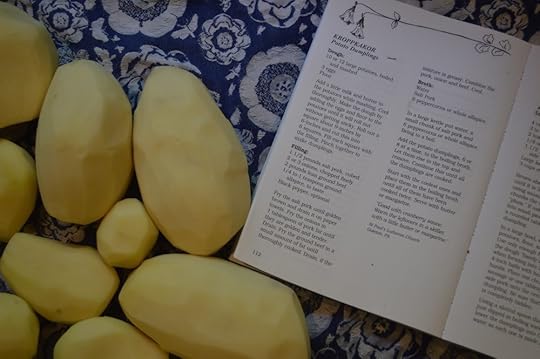
Eleven years ago, around this same time of year, while living abroad in Sweden, I made a decision that would haunt me for over a decade. I was in my first semester studying Swedish language and culture in Växjö, when my professor suggested I visit Öland, the country’s second-largest island. Öland was about to host its annual harvest festival, Skördefest, and my professor thought I would enjoy the cultural experience. To me, making the decision to go was easy. I loved my hometown autumn festivals back in the Washington, D.C. suburbs where we would eat fried apples and roam around corn mazes for hours. Skördefest would be a great chance to see how Swedes celebrate the changing seasons.
A friend, Suvi, and I hopped a train to Kalmar and then went by bus across the Ölandsbrun, Öland bridge, to the town square in Borgholm. Greeted by a towering figure comprised of various gourds, squashes, and pumpkins, Suvi and I joined the thousands of other visitors to the narrow island in the Baltic. We walked to Borgholms Slott, Borgholm Castle, the ruins of a twelfth-century fortress. It was like stepping back in time, or stepping into the pages of one of Elsa Beskow’s beloved children’s books. Throughout the inside of the fortress ruins, craftsmen and craftswomen gathered creating a wool market. Spread over their tables was an impressive assortment of wool clothing, textiles, and sheep and tomte decorations. Little old ladies sat at aged spinning wheels, their feet gently bobbing in silent rhythm, their waxy fingers twirling raw wool into fine yarn. Many people were dressed in traditional costume. There may have been folk music playing in the air, or it might have been all in my head. Whichever it was, there was a magic in the air of those ruins, a magic that translated to a call for celebration. Summer was over, the autumn harvest was in full swing, and the Swedish people were rejoicing in the last cool days of 2015 before winter fell upon the land.
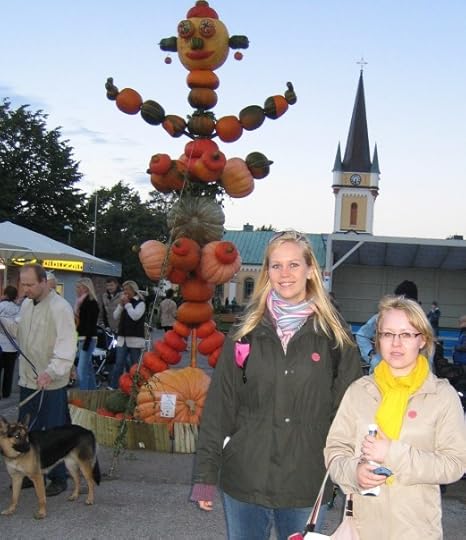
Me and Suvi, 2005
After Borgholms Slot, Suvi and I went back to the town square where we joined others in Skördefest merriment and stopped for a quick lunch, hungrily devouring a kebab pizza. It was only after my belly was full of kebab pizza that I saw other festival-goers eating something I had never seen. Everyone in the streets held cardboard bowls of something. What was it? I had to ask.
“Kroppkakor med lingon,” a man informed me, taking a large bite. The meal looked and smelled heavenly. But what was it? Potato dumplings filled with diced ham and served with lingonberries, he said and encouraged me to try some for myself. But I was already too full.
I promised myself that before I left Sweden, I would find kroppkakor again. But I simply had no idea the delicacy would be so difficult to find. Instead, I left the country the following June without ever getting to sample this native cuisine. That’s how a simple decision—to eat kebab pizza—became one of the greatest mysteries of my youth, and a regret I held deeply in my heart for eleven years.
When I asked my Swedish relatives about the dumplings, they said the dish is famous in Öland, but that it is very difficult to make. My cousins told me I had to find the right type of potato, or the dumplings would fall apart when I boiled them. They told me it wasn’t worth it. Make meatballs, instead. But I didn’t want meatballs. I wanted kroppkakor. For eleven years, I’ve wanted kroppkakor. Wondered about kroppkakor. Yearned for kroppkakor. Until now.
Last week, I leafed through my copy of Our Beloved Sweden, an old Swedish Lutheran cookbook published in Hastings, Minnesota, in 1996, whose introduction reads, “We dedicate this book to the honor of our ancestors who came from Sweden with their hopes and dreams, and brought with them the Swedish ways that they cherished and hoped would be perpetuated.” I have no idea how this cookbook came into my possession, but I’ve had it for as long as I can remember, and amazingly, it contains four recipes for kroppkakor. I chose to make the first recipe, and eagerly went to the grocery store to buy everything I would need. My husband, I should add, who has heard me talk about the illusive kroppkakor since he and I married in 2012, was both excited to get to taste the end product and to get me to finally shut up about the potato dumplings. But he was also skeptical of my ability to accomplish the task. He’d heard my Skördefest story and my relatives’ warnings about the difficulties of preparing the dish, and with some playfulness, he portended, “You’re going down like the Vasa.”
My husband’s warning only urged me on. I would not sink like the 17th century war ship! I would prevail and prove my worth as a Swedish cook, as I had done time and again with my family’s recipes for kåldomar, köttbullar, and others.
As instructed, I peeled, boiled, and mashed the potatoes and let them cool. Because I didn’t know what my cousins meant when they told me I needed to use the “right” potatoes, I used a combination of russet, yellow, and red potatoes. I then began to make the dumpling dough by adding three eggs and flour. The recipe didn’t indicate how much flour to use, it simply stated, “Make the dough by adding the eggs and flour to the potatoes until it will roll out without getting sticky.” I started with two cups of flour. And then four. And then six. And then I lost count. I used nearly two entire packages of all-purpose flour before the mixture became something resembling a dough.
For the filling, instead of using a pound and a half of salt pork, as the recipe called for, I used a pound of bacon and half a pound of salt pork. To me, salt pork is too fatty (and chewy) for my liking, and bacon—in my opinion—just makes everything better. The recipe suggested a quarter of a teaspoon to a full teaspoon of allspice. I love allspice, so I used an entire heaping teaspoon’s worth. The recipe also doesn’t tell me how much many dumplings it yields. I ended up rolling out eighteen dumplings.
“Are you planning to feed an entire church?” my husband smugly mused, as he helped line baking sheets with parchment paper so I would have somewhere to place the dumplings after boiling. He still had such little faith in me! But his teasing only urged me onward, ever the more resolute to prove him wrong.
Next came the true test: the boiling. Would the potatoes fall apart, as my cousins predicted? Would the dumplings float to the top once they were finished cooking, as the recipe implied they would? How would they taste? I was so close to finding out.
Gently, I spooned the large dumplings—indeed, they were nearly the size of baseballs!—four at a time into the boiling, salted water. And then I waited. And waited. My husband gazed into the pot, and I grew nervous. Had I failed? I pushed a dumpling with a wooden spoon. Immediately, it rose from the bottom and bobbed in the rumbling water. Soon, the others followed suit. They all floated! I’d succeeded! But how about the taste?
It was my turn to be smug, as I dished up two dumplings per plate and smothered them with butter and lingonberry preserves. My husband and I sat down at the table, and I took a deep breath. Eleven years of wondering, and now I’d finally know if kroppkakor was as good as it looked. I cut into one dumpling and allowed some steam and a bit of the filling to spill out. They looked good. They smelled good…I took a bite. They tasted good! Vasa Ship, I was not. I’d successfully prepared Öland’s unofficial dish. My curiosity was, at last, satisfied.
Sitting in our dining room after a long day in the kitchen, I reflected on this moment. My potato dumplings were probably not as good as they would have been under the Swedish sun on that crisp September day on the streets of Borgholm in 2005. How could they be? But for a thirty-one year-old-woman who will forever be fond of that transformative year of self-discovery when she was twenty years old, living away from home for the first time in her life, I think my kroppkakor turned out lagom. They turned out “just right.”
Kroppkakor
Recipe for kroppkakor, a contribution by St. Paul’s Luterhan Church in Galeton, PA, courtesy of the cookbook Our Beloved Sweden
Dough:
10 or 12 large potatoes, boiled and mashed
3 eggs
Flour
Add a little milk and butter to the potatoes while mashing. Cool thoroughly. Make the dough by adding the eggs and flour to the potatoes until it will roll out without getting sticky. Roll out a square about 9-inches by 6-inches and cut this into 6 squares. Fill each square with the filling. Pinch together to make dumplings.
Filling:
1 ½ pounds salt pork, cubed
2 or 3 onions, chopped finely
2 pounds lean ground beef
¼ to 1 tsp. ground allspice, to taste
Black pepper, optional
Fry the salt pork until golden brown and drain it on paper towels. Fry the onions in 1 tablespoon of pork fat until they are golden and tender. Drain. Fry the ground beef in a small amount of fat until thoroughly cooked. Drain, if the mixture is greasy. Combine the pork, onion and beef. Cool.
Broth:
Water
Salt Pork
6 peppercorns or whole allspice
In a large kettle put water, a small chunk of salt pork and 6 peppercorns or whole allspice. Bring to a boil.
Add the potato dumplings, 6 or 8 at a time, to the boiling broth. Let them rise to the top and remove. Continue this until all the dumplings are cooked.
Start with the coolest ones and place them in the boiling broth until all of them have been cooked twice. Serve with butter or margarine.
“Good with cranberry sauce. Warm the leftovers in a skillet with a little butter or margarine.”

*This article originally appeared in the Swedish-American newspaper, Nordstjernan, vol. 141, no. 15.
February 2, 2016
An Innocent Abroad
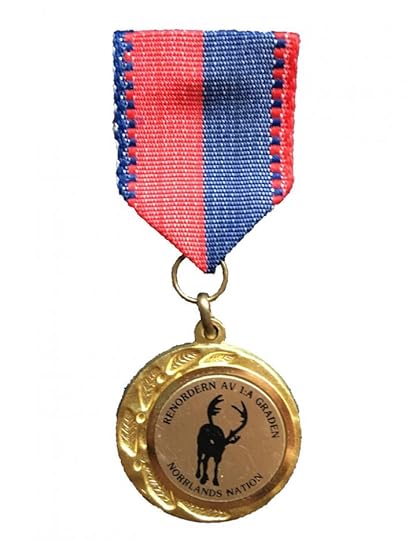
An Innocent Abroad
Sweden made it easy for me to fall in love with her. In fact, I had anticipated falling in love with her. How many stories had I listened to my family tell about the country with green fields and red houses, the country from which our family originated? In 2005, determined to discover this landscape—and its people—for myself, I enrolled for a year at Växjö Universitet (now Linnaeus University).
Växjö, whose name derives from väg (road) and sjö (lake), immediately captured my heart. It is the quintessential city where the road meets the lake. Within minutes of landing at Växjö’s tiny airport, I wanted nothing more than to just blend in with the local community and to get in touch with my Swedish roots. Naively, I believed there was a standard code of conduct, practiced by all Swedish people, and if I could just get my hands on a copy of said code, I would succeed at convincing everyone that I was a “real” Swede. In a sense, I wanted to deAmericanize myself—if only for the two semesters I’d be there—to allow Sweden the chance to teach me something. Something about its culture, its heritage, its people. I wanted Sweden to teach me something about myself. Resolute in my quest, I attempted to pass myself off as a bonafide Swede.
My first attempt lasted an hour.
As soon as I arrived at the University, I decided to walk from the campus to Växjö’s town square. The bike path into town is a beautiful stretch of pavement running along the perimeter of Växjösjön to the city’s central shopping district. As I walked the route, I greeted every stranger I met with a friendly “Hej!” expectant that my inflection would convince the locals I was one of them. But instead of enthusiastic greetings in return, each passerby looked at me queerly. Most uttered a quick “Hej” as they scurried away, never making eye contact. But some didn’t look at me—or even acknowledge me at all. “My pronunciation must be off,” I told myself, and continued on my way. It wasn’t until weeks later that my Swedish boyfriend laughed at my behavior and told me, “We have a joke here in Sweden that the only people who say ‘hello’ to strangers are drunk, crazy, or American.” How had I so easily become a punch line? Well, I would not make the same mistake twice.
Not long after, at a dinner party with new friends, I continued my quest to prove my Swedish authenticity. “Just do as they do,” I whispered to myself before the meal. As my hosts began the first round of “Helan Går” at the dinner table, I clutched my snaps glass and imitated the best I could. Perhaps I didn’t know the words, but I could certainly mimic their smiles and their good cheer. And, when it came time to drink the aquavit, I did as I’d always seen my American friends do: I swallowed the entire shot. After finishing the song and my drink, I looked around the table to see I was only guest to swallow the whole glass. The others had only taken a small sip while mine now sat empty. I sunk a little in my chair, my cheeks burning with more than the sting of the alcohol.
Finally, resolute in my pursuit to be as authentic a Swedish girl as possible, I bought tickets to an evening gala hosted by Swedes for Swedes at the campus castle. “I’ll do whatever I have to do!” I promised as I and my American girl friend, Erin, dressed up in our finest eveningwear and sat down to a formal meal. Only, this time I remembered my prior missteps. Now, I waited to greet the people at my table until they greeted me first. When the toastmasters sang “Helan Går,” I merely took a small sip from my glass. Everything was going so well. My Swedish companions were impressed with my Scandinavian decorum. But it wasn’t until the evening’s close that came the ultimate test of my allegiance, and I was faced with the question of how far I was willing to go to prove my loyalty to this new country. Was I really willing to shed my American identity for a Swedish one?
As the hosts ushered small groups of dinner guests out of the great hall and into a antechamber, Erin and I exchanged nervous glances. Where was everyone going? Would we be invited to go, too?
“Don’t worry,” one of the toastmasters told us. “We’re waiting to take you two last so we can do it in English.” Erin and I nodded and smiled though we had no idea what for. Do what in English?
At long last, it was our turn to exit the room. Our hosts took us each by the hand and led us into a private, dimly-lit library. The room smelled of old cigars and faded memories. But it wasn’t the dripping candles in the candelabra or the antiquated books on the bookshelves that caught my eye. It was something else. There, in the center of the wall before us, hung a mounted moose head. I came face to face my Swedish alter ego in the shape of an antlered mammal.
I won’t pretend to recall what exactly was said in this intimate encounter. I even called Erin before writing this article, now ten years later, to see if she could remember, but neither of us could. Not exactly. The one part we each remember, however, is the same. At some point during those five minutes of secret initiation, Erin and I were each asked whether we pledged allegiance to the moose. To me, it was the ultimate test. All that I’d worked so hard for was summed into one simple question. Did I—or did I not—pledge allegiance? And suddenly, it wasn’t the eyes of a taxidermy moose that I stared into, but the eyes of Lady Liberty. Which country would I choose? Where did I belong? Who was I, really? Deep down inside?
Here was the moment of self-actualization I’d been waiting for.
And as I stared into those shiny glass eyes, I realized how the toastmasters had waited to take me and Erin last. They hadn’t excluded us. But they hadn’t grouped us together with other Swedes, either. They knew we were different, and, despite this difference, we were still welcomed to participate in their important university ritual. I was one of them. Somehow, in that minute, I was both American and Swede simultaneously.
“So do you pledge?” The toastmasters waited for my answer.
“Javisst. Of course.”
This article originally appeared in the Swedish newspaper of America, Nordstjernan, vol. 142 no. 22.
August 4, 2015
How I Landed (and Kept!) a Pen Pal…and You Can Too!

There's no joy quite like running expectantly to the mailbox and finding a hand-adressed letter within. It stands apart from the rest of the stack--bills, catalogs, pennysavers, mostly--because it's obvious that someone put time and love into its mailing. And the best part is that it's for you.
I've had varying degrees of success starting and keeping pen pals over the years. In my childhood, I eagerly filled out the standardized forms in the back of my Teen Beat magazines for a cross-country pen pal, inclusive of my photo and a nominal fee. In high school, I tried reaching out with paper-and-pen to distant family members, people who didn't really know me and were too busy to care. And in college, I was too busy stalking old friends on the newly created Facebook to actually write them a letter to ask how their lives turned out.
But now? Now I have a real pen pal.
I recently moved far away from family and friends and all those other people one cares about. The move was symbolic of a desire for change in lifestyle…and that included connecting with people in more authentic ways. So before I left, I approached one of my girlfriends one night over drinks with my proposition: "Will you be my pen pal? And don't say 'yes' unless you're going to really do it. Because I want this to be special, and that's why I chose you." The rest is history.
So I present you now my 5 foolproof rules for landing a pen pal and keeping her (or him):
1. Choose your pen pal carefully. Pick someone you genuinely care about, someone you don't often see, and someone who is as excited as you are at the prospect of having a pen pal. You want to look forward to both writing and receiving letters, so choose someone in whom you are genuinely interested. And it's so important you choose someone with whom you can be honest. Choose a "safe" person.
2. Unfriend, unfollow, block this person on all social media. This is the hardest rule because online relationships are all-encompassing with their instant photos, updates, and statuses, but this is the most important rule. If you have an online relationship with your pen pal, writing letters back and forth will just seem silly. But if you wait to learn about your pen pal's life through her or his letters (rather than her or his online persona), you'll find a deeper connection. It's crazy that to "connect" we must first "disconnect."
3. Buy beautiful stationary. The paper you write on doesn't have to be expensive, but it should be interesting! I get a thrill in finding cheap vintage postcards at flea markets or old antiquated photos at yard sales. You can usually buy items like this for less than a dollar, and it makes for fun sharing. Stay away from bulk boxes of generic cards. Your pen pal will thank you for the variety, and hopefully she'll return with a diverse collection herself.
4. Don't make small talk. You have a very limited amount of space in each card, so don't waste a word! Instead, write what's on your mind, what's weighing on your heart, what you need advice on. Leave the pleasantries for online, and save the raw emotion for your pen pal. Let's face it, when a relationship includes honesty and vulnerability, we are strengthened and bonded in authentic ways. So be brave and bare your soul. (And on the receiving end, be respectful with your pen pal's privacy, too. After all, she--or he--is writing this letter to you, not your spouse and not your circle of friends.)
5. Write back! Don't get complacent. I suggest writing a letter a week. And if time gets away from your pen pal (or life gets in the way, as it does), just pick it back up on your end. No pressure. No guilt. Just love in words.
February 11, 2015
My Oh-So-Swedish Philadelphia Experience

This original post was published by the Swedish-American publication, Nordstjernan, here.
One of the great things about living twenty minutes outside the Nation’s capital is the area’s diversity. I can think of nowhere else where people of myriad backgrounds and nationalities live and work in such close proximity. I relish the opportunity to experience new and exciting cultures and traditions. This is a place where diversity is celebrated and encouraged. So when I returned to DC after studying abroad in Sweden, I was surprised at how little a footprint Scandinavia had in this area. (This was before the opening of the House of Sweden, a beautiful building situated in the heart of Georgetown overlooking the Potomac River.) As someone who wanted to continue fostering her education about Swedish roots, I found my options in DC limited.
Two hours north, however, in downtown Philadelphia, I discovered the American Swedish Historical Museum, an organization devoted to sharing Sweden with the East Coast. Imagine my surprise, when I happened to first visit the museum, that I should find a Swedish estate house buried in the urban surroundings of one of America's oldest cities! There I was just a stone's throw away from the Eagles' Lincoln Financial Field, yet finding myself comforted by familiar Swedish architecture. The museum's facade fondly reminded me of my trips to Kalmar Castle, Gripsholm Castle and Stockholm's Royal Palace. And suddenly, it seemed as though I had been transported across the Atlantic, and I found my heart quickly aching to return to those Swedish places I so love.
Walking through the museum, I especially enjoyed the stuga room, a farm-house interior recreated to reflect the dwelling places of the earliest Swedish immigrants, the museum's collection of original paintings by Carl Larsson, and one specific portrait of King Gustaf Vasa by the artist Nils Kreuger. The oil painting portrays the back of the King's head, and the placard next to the gilded frame quotes Gustaf Vasa as saying, "Because a poor likeness was done in Uppsala, painters shall only now do the back view." The depiction and description still makes me chuckle today. Though I visited the museum on a cold, rainy day in May four years ago, I look forward to returning to the museum this summer to celebrate Midsummer on their beautiful grounds. Without a doubt, the American Swedish Historical Museum satisfied my desire to find a place where I can go when I long for a little bit of Sweden closer to home.
Read an excerpt from The Number 7 where the main character finds and explores the American Swedish Historical Museum in Philadelphia: here.
February 3, 2015
Guest Post: The best book I read recently...
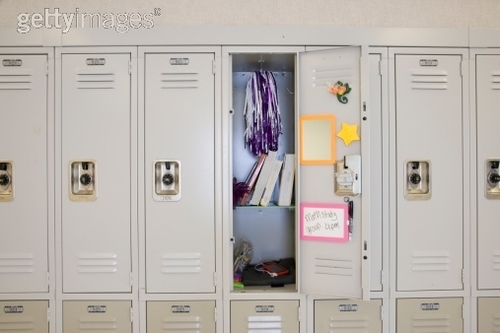
Photo by Jetta Productions/Digital Vision / Getty Images
Today I asked two of my favorite former students to guest blog for me. My question was simple..."What was the best book you read recently?" Here are there answers:
Mia, 17
The Hitchhiker's Guide to the Galaxy, by Douglas Adams
Arthur Dent, his alien hitchhiker friend, the woman that rejected him for a "space man," the space man with a personality literally split into two, and a manic depressive robot. What do they have in common? Absolutely nothing, which is why their severely misguided journey to find something as serious as the meaning of life in made comical by their utter incompatibility. Trying to understand the dynamic that Douglas Adams successfully established is like imagining a child futilely jamming a square block into the space for the circle. One would think it would never work, but what Adams does well is hack away at that square in order to make it fit. Arthur Dent, Zaphod Beeblebrox, Trillian, Marvin, and Ford represent all the square blocks in the world that just would not fit in the circle. Yet these rejected circles are expected to find the meaning of life, to get to the bottom of why they exist. What ensues is both hilarious and oddly insightful because ultimately the answer to the overarching question is rather meaningless: it's 42. Arthur has his home planet--Earth--blown up. Zaphod steals a legendary ship. Trillian is almost eaten alive. All for a lousy number. It may not have been intentional, but Adams speaks to the unnecessary importance we often place on life having a meaning, on the desire for life to have meaning. The result is that, as passion builds to find meaning where there is none, the true meaning is lessened because anything will be accepted to satiate that hunger for meaning. Almost like planting evidence just to be right. The Hitchhiker's Guide to the Galaxy becomes a piece on absurdism, evolved from its comedic origins and superficial observation.
Aminata, 17
The last great book I read is actually the book I'm currently readying. It's called Fangirl by Rainbow Rowell. I'm only partially through the novel, but I really like it so far--mostly because I can relate to it. Not to the fact that Cath, the main character, has a twin sister, but every other aspect about the main character I can relate to. It's about how Cath is undergoing her first year at a university and she still isn't over her obsession with Simon Snow. Cath is me because I'm going to go to college in the fall and I'm still not over my obsession with Justin Bieber (although I'm really into a band called The 1975). She's a bit antisocial and the friends she befriends seem like they're going to be her close friends for a long time. (She only has 2). I'm currently at the part where she's having an emergency dance party with her new friend, Levi, and they're dancing to Kanye. Whenever I'm stressed or upset, I always listen to my favorite songs on repeat. (I have a special playlist that I listen to.) My favorite author is definitely John Green, so I recommend people read ALL of his books, including his part in the multi-authored book, Let it Snow.
As for me, I'm currently reading my first Gabriel Garcia Marquez novel, Chronicle of a Death Foretold. Each night I get to sneak in a few pages--I am a mother of two young children after all--his words drip like honey off the page. They're sexy and funny and devastating and honest. I'm not a passive accomplice when reading his work, instead, I'm an active participant. He invites me into his universe, and I can see it and smell it and feel it. It's hard to articulate the feeling I get when experiencing his language, only that it's as if I'm transported to a place where I get the pleasure of watching his various worlds take shape. And Marquez? He's a master craftsman. A builder of life.
December 21, 2014
My Not-So-Swedish Family Christmas

This post originally appeared in Nordstjernan.
For decades, my family has celebrated Christmas the same way, every year. I grew up listening to my grandmother tell me, “This is how the Swedes do it, how your relatives did it. So this is how we do it.” It didn’t really matter to me that my grandmother is actually a second-generation Swedish-American and not truly Swedish. (In fact, my closest relative to celebrate a legitimate Swedish Christmas would be my great-great-grandparents, who came to America in the late 1800s.) What mattered was the fact that we were replicating the traditions and customs of my ancestors, my roots, my people.
This is how my family celebrates Christmas. On Christmas Eve, we have dinner, complete with Swedish meatballs, lingonberry preserves, ham and Swedish prayer followed by an evening service at my grandparents’ Lutheran church. On Christmas morning we open presents from Santa, and eat a Swedish brunch of potatiskorv (potato sausage) and äggröra (egg gravy).
It’s all very proper, and I dare say a Christmas that deviates from this tradition wouldn’t seem like Christmas at all. I always felt I celebrated in a way that honored my ancestors, those Swedish immigrants who left their homeland over a century ago for better lives in hope-filled America.
Or so I thought.
In 2005, I eagerly invited my then-Swedish boyfriend, Erik, to partake in my family’s Christmas. I expected him to be impressed, to be moved by how we kept up authentic Swedish traditions. Most of all, I expected him to feel at home.
But things quickly went awry at the Christmas Eve table when my grandmother proudly shared with him the family’s traditional Swedish prayer. We would finally hear a real Swede read the words we’d only imagined we pronounced correctly for years. Erik took one look at the prayer and sheepishly said, “This isn’t Swedish; it’s Norwegian.”
We were stunned. Of course, looking at the words now, it is easy to see the Norwegian vowel ø, a vowel that doesn’t exist in the Swedish language. How had none of us spotted it before? My mother and I had both even lived and studied in Sweden.
“I can still read it if you’d like,” he offered meekly, but it was too late. Swedish Tradition #1 — The family prayer: ruined.
Later, when we pulled into the church parking lot, Erik was visibly uncomfortable. He shifted awkwardly in his seat and tapped his knees with his palms.
“Is everything OK?” I asked. “Are you worried the service won’t be in Swedish?”
“You know,” he whispered, “Swedes don’t really go to church.”
“I know they don’t go much during the year, but surely, on Christmas …” I responded.
“No, not then either,” he answered.
“But how do you celebrate the birth of Jesus?” I questioned.
“With Donald Duck,” he replied matter-of-factly.
While I sat in the car, mouth agape, Erik explained to me, in detail, how Swedes everywhere gather around the television on Christmas Eve for an annual showing of "Kalle Anka och hans vänner önskar God Jul" (Donald Duck and his friends wish you a Merry Christmas). And they’ve been doing so since 1959. Young and old watch the cartoon together in a moment of familial togetherness. In a very real way, watching Kalle Anka on Christmas Eve is as much a Christmas expectation for Swedish people as is attending church for Americans. Swedish Tradition #2 — Lutheran church service: crushed.
The next morning, after exchanging gifts — which Erik informed me happens on Christmas Eve in Sweden (Swedish Tradition #3 — gifts on Christmas morning: poof) — my family prepared our cherished Swedish Christmas brunch. It involves boiling the potato sausage before browning it in the skillet and carefully stirring the eggs and milk to cook the gravy slowly. The process of cooking the meal is as meaningful as sitting down to eat it.
“We order the sausage special from Minnesota,” I declared smugly to my boyfriend as he swallowed his first bite. The casing crackled as he cut off another slice. “Does it taste like the kind you have at home? And the äggröra? It’s so tricky to make sure the egg doesn’t separate, right?”
“I’ve never had it before,” he said in between forkfuls.
“Huh?” For me, this plate of food was the most important meal of the entire year. I love this dish so much, that should I ever find myself on death row, potatiskorv and äggröra would be my last meal. My family reserves these recipes for the most holy day of the year — preparing this meal on any day other than Christmas would be sacrilegious.
“It tastes good, but, you know, this is a typical meal for poor Swedes from the old days. Pork is more expensive than potato, so long ago Swedes used to add potato to the sausage to extend the pork. It’s all filler,” Erik continued. “And the äggröra is mostly milk, not eggs. Eggs were hard to come by, so they did what they could to spread them out.”
And there it was. My Christmas brunch, a meal I believed was suited for royalty, was nothing but a poor man’s breakfast. Swedish Tradition #4 — potato sausage and egg gravy" annihilated.
There was nothing left.
But here’s the thing. After getting over the shock that my Swedish Christmas traditions were a sham, I surprised myself. I found I wasn’t ashamed or embarrassed of what Erik had taught me. Instead, I became more proud of my family’s holiday. Sometime, somewhere over the years and years celebrating Christmas, my family’s traditions changed from the original Swedish customs. I now understood how it’s not about celebrating Christmas the Swedish way, but celebrating Christmas our way. After all, we’re not authentic Swedes; we’re Swedish-Americans. And for what we are and what we’ve become, I think my great-great-grandparents would be proud. God jul!
December 4, 2014
Dear Teen Me...
Dear Jessica,
In about two miles, you’re going to get into your first car accident, so please slow down.
Your sister is in the passenger seat. She’s not talking to you again, but that’s okay because you haven’t really liked what she’s had to say for awhile. You let the silence speak for you. And she listens to that silence as if it were your confessional. And your confession is this: in this moment, you hate her.
She listens to that, too.
You hate her because she is making your life really hard. She’s dealing with some pretty heavy shit, and you can’t handle it. You can’t talk to her about it because it only makes you feel more shitty. It’s something you can’t control. It’s something you can’t undo. It’s something you can’t fix. But it’s something that is destroying her. So, Jessica, for once in your life, please stop making it about you.

Jessica (Hanson) Lidh Senior Portrait 2003
Here’s the thing about your little sister. She doesn’t really want a big sister. She wants someone to listen to her.
You think you can impart wisdom on her by repeating the same words over and over, stressing how you know more than she does because you’re two years older. But it’s not about you, Jessica. This is about her. And right now, she needs you to listen to her. She needs you to believe her. She needs to know you care that she survives this.
So instead of using this time alone to yell, instead of telling her how she’s a pain in the ass because you have to drive her to group therapy so she can sort through all this bullshit, just listen to her. No interrupting. No becoming defensive. No pointing the finger back at her. Just listen. It’s okay you don’t know what to say. It’s okay you don’t know what to do with all she’s going through. She doesn’t know what to do, either. No one does. But at least she’ll know she’s not alone.
Now, stop fiddling with the radio and look up.
Jessica
This post originally appeared on the website, Dear Teen Me.
November 11, 2014
The Art of Storytelling
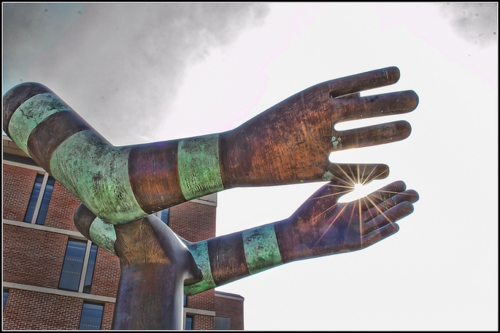
This weekend I was invited to the 40th birthday party of a man I don’t know very well. This reality was compounded by the fact that I was soon surrounded by his closest friends and family—all people who knew him very well. I tried my best to stick to the periphery of the gathering, trying not to draw too much attention to myself lest I be cast out as an intruder. What I witnessed at this party, however, was a bit of magic.
Much of the man’s family—including his two parents—is deaf, and about an hour and a half into the party, guests were asked to gather into the living room for “storytelling.” I watched as first his mother, then his father, his cousin and his younger sister, each took the proverbial stage to relay memories and stories about the guest of honor. I listened to tales about his attempted homicide of his baby sister with an over-zealous bottle of baby powder, his winning homecoming court and prom king in the same year of high school, and his affinity for shirtless wrestling and Guitar Hero. The storytellers—aided in part by an ASL interpreter—told their stories with gusto, gesturing largely with their hands, their bodies, and their faces, pulling down the corners of their lips to pantomime mock-anger or smiling widely at the punch lines of their own jokes. Needless to say, I’d never experienced living-room storytelling with such abandoned joy. And because I don’t know the man very well, I felt as though I was witnessing a special, private moment usually reserved for only the most intimate of acquaintances.
I also noticed that none of the guests was checking his phone during the stories. Everyone—me included—was totally enraptured by this exchange of old memories. The storytellers made us feel a part of them: the memories, the stories, their lives. I don’t exactly know how they did it, but in that moment, the love in the room was palpable. The hairs on my arms stood on end, my heart ached with happiness and amusement. I felt alive.
This communion of memories made me realize the importance of congregating together, leaving our distractions at the door, and simply enjoying the story. A good storyteller will introduce new worlds of which the rest of us can only hope to be a part. And it’s the master storyteller who makes us forget that the story wasn’t ours to begin with.
October 15, 2014
Why Students Don't Read

Last night I spoke to a group of English Education graduate students at the University of Maryland. I had originally been asked to speak about YA literature, its influence in the classroom, and my own upcoming novel, The Number 7. For a long time, I thought about what I wanted to say. Of course, YA is important in the classroom. Yes, YA is incredibly popular with young and adult readers these days. But wouldn’t these English Education majors already know these things? What did I have to add?
I thought about my own students, a population of diverse young readers. 95% of the students at my school are children of color, and 78.4% of them have or have previously received Free and Reduced Lunch (a program based on household size and income). What would my students want me to talk about? What would they want me—and those people studying to be teachers—to know? And then I realized what I wanted to address with these graduate students: why students don’t read.
I conducted an admittedly simple survey of 9th grade English students at my school, asking two classes (one Honors and one On-level/Co-taught) why they did or did not read for fun. The results weren’t too shocking.
In the Honors class, 48% of the students stated they read for fun while 52% of the students admitted they don’t. Those results weren’t too discouraging. At least nearly 50% of the class enjoys reading, right? The On-level/Co-taught results were a little more disheartening, but, again, not too surprising. 72% of the On-level/Co-taught students admitted they don't read for fun.
72% of the On-level/Co-taught students admitted they don’t read for fun.
Then I looked at the reasons the students in both classes cited why they don’t read. The overwhelming majority answer (93% in Honors and 83% in On-level/Co-taught)? Reading is boring and there aren’t any interesting books to read.
…So why is reading boring for my students? Why don’t they read for fun? Maybe because the majority of books available to them are about kids who don’t look like, sound like, or act like them. A few facts to consider:
· “Too often children of color and the poor have window books into a mostly white and middle-and-upper-class world.” Children of all races need a healthy supply of “window” books and “mirror” books.
In his New York Times article, “Where Are the People of Color in Children’s Books?”, author Walter Dean Myers contemplates, “Books transmit values. They explore our common humanity. What is the message when some of our children are not represented in those books?” We ask ourselves why our students don’t like to read, and the answer is simple. Because we ask them to read about Holden Caulfield and Hester Prynne and Jay Gatsby. Who of us can actually say we can relate to any of those characters? Not I.
So how can we incorporate the new #WeNeedDiverseBooks initiative inside and outside of classrooms?
Here are a few ideas:
1. Visual representation on open spaces. Decorate your refrigerators, your bulletin boards, your chalkboards and whiteboards with diverse titles and covers and authors. Some teachers devote entire bulletin boards to diverse titles. Parents can decorate bedroom walls with diverse book posters. Show young people what is available, what’s out there, what they might identify with.
2. Build a diverse bookshelf. Ask yourself, “Does my book shelf contain books with characters of color? LGBTQ? Differently-abled? Does it include books with main characters of color? LGBTQ? Differently-abled?”
3. Utilize all the materials available to you on the We Need Diverse Books Tumblr site. Like flowcharts that help young people identify books they’ll enjoy.
4. Think about how we communicate books to young people. Instead of saying a book is “about a girl in Ancient China trying to find good fortune with Chinese folktales woven throughout the story.” Try, “It’s an adventure story! The main character saves a dragon and they travel together on a great journey!”
5. Talk to the young people in your life about what they’re already reading. After all, they’re our best YA recommenders.
In his book, Two Boys Kissing, David Levithan sums up the need for diverse books so completely and fantastically, I can’t simply summarize it. I must quote it. The book, narrated by a Greek chorus of the generation of gay men who died from the AIDS epidemic in the 1980s and 1990s, speaks directly to the modern-day reader. The chorus declares, “We know that some of you are still scared. We know that some of you are still silent. Just because it’s better now doesn’t mean that it’s always good…We wish we could offer you a creation myth, an exact reason why you are the way you are, why when you read this sentence, you will know it’s about you.” This is what we need. We need young people to see themselves in the books they read.
And how lucky for us—educators, authors, parents, friends—that we can be the people who guide them there.
September 24, 2014
My Defense of the Five Banned Books I Teach My Students

1. Adventures of Huckleberry Finn by Mark Twain
Why It’s Been Banned: According to bannedbooksweek.org, Adventures of Huckleberry Finn was first banned in 1885 when Concord, Massachusetts, referred to it as “trash and suitable only for the slums,” and it’s no coincidence that Huck Finn has been one of the most controversial books in American history ever since. Twain’s use of the n-word 219 times, his criticism of religious—mainly Christian—hypocrisy, and his poking fun at educated, ‘sivilized’ society, make the book an easy target for parents and school boards.
Why I Teach It: In addition to its humor and satirical wit, the real heart of Huck Finn lies within Huck’s internal struggle to “do the right thing” in a wrong society. His transformation into someone who has to rethink everything he’s been taught about race speaks loudly to the journey all Americans face today—our need to undo what history and society has taught us about cultural, racial, and class differences. In a sense, Huck might be one of the first fictional characters to have a moral awakening regarding his white privilege, even if he is uneducated, poor, and—by Hannibal, MO, standards—sinful.
2. The Scarlet Letter by Nathaniel Hawthorne
Why It’s Been Banned: It’s always risky to mix sex and religion in America, am I right? And then to top it off, Hawthorne sets his adulterous affair in Puritan New England, one of the most strict and conservative time periods in this country’s history. He was practically asking for a scandal upon the book’s publishing in 1850. Perhaps the real reason for the book’s banning lies within Hawthorne’s refusal to give us any racy details about Hester’s illicit relationship. It’s our imaginations—not the book—that run wild with suggestion.
Why I Teach It: The Scarlet Letter does a wonderful job displaying the struggle of good versus evil within society and within the self. The novel can be a testament for the need for self-acceptance and tolerance in one’s own life. And while adultery may be an uncommon offense by today’s standards, female-labeling and slut shaming—both of which are ever present in the book—are not.
3. A Raisin in the Sun by Lorraine Hansberry
Why It’s Been Banned: In her book, Banned Plays, Dawn B. Sova explains how the 1961 film adaptation of A Raisin in the Sun received both criticism and censorship because of “the bitterness expressed by Walter Lee toward white society.” Set in Chicago in the 1950s, Hansberry’s play confronts the ugly truth of institutionalized racism in America. Reading (or watching) this play makes you feel icky about how society has treated people of color in our—even recent—history.
Why I Teach It: Nearly each member of the Younger family finds him or herself beaten down by institutionalized racism, those invisible, ingrained structures preventing both success and happiness. Beneatha Younger, especially, struggles to understand her place in society not only as an African-American, but as an African-American woman. Her struggle is two-fold; she must combat both racist and sexist stereotypes. Beneatha grapples with her choice to either style her hair naturally or relaxed (a choice First Daughter Malia Obama was criticized for in 2009, and a choice Beyoncé came under fire for this past summer), and she discovers the uphill battle she faces as an Black woman desiring an equitable college education. Some readers may think the story ends triumphantly as the Youngers decide to bravely move into the white neighborhood that doesn’t want them, but I always ask students what Hansberry must have imagined happens to the family after the play’s last line is spoken.
4. Invisible Man by Ralph Ellison
Why It’s Been Banned: Even as recent as last September, this book has faced scrutiny. In September 2013, North Carolina’s Randolph County Board of Education voted to remove the title from its shelves because one parent complained about its language, protested its sexual content, and claimed it was “too much for teenagers.”
Why I Teach It: Honestly, the opening chapter alone is one of the reasons I teach this book. The narrator’s coming-of-age journey as a naïve young man displaced from the racist South to the racist North is one worth studying. His attempts to first assuage and then combat society determine his fate at the end of the novel: sealed up in a dark, underground hole. It’s up to us to decide whether he’s better off with his new understanding and perception of the world in which he—and we—lives.
5. The Great Gatsby by F. Scott Fitzgerald
Why It’s Been Banned: I was surprised to read on bannedbooks.world.edu that “the majority of the copies that are read in schools have actually been changed from the original to make them ‘more acceptable’ for high school readers,” and it makes me want to pick up my copy to see which one I teach. The book is often criticized for its language and sexual content. But… this book takes place in the 1920s. It’d be borderline historically inaccurate if it didn’t contain questionable language and sexual content.
Why I Teach It: In this day and age when we have terminology like “the one percent,” the “dwindling middle class,” and “occupy wall street,” a book about the disillusionment of the American Dream is especially appropriate. Fitzgerald captures the three levels of society—the poor, the middle, and the upper classes—perfectly, and spends a great deal of effort portraying the different worlds. There’s certainly a compassion he feels with the lower-class’s aspiration to be on top, but he also paints a delicate picture of the unhappiness and vapid existence of the rich. This isn’t a story about “them,” the American elite; it’s the story about “us,” the ambitious, hopeful, and wide-eyed American. Period.



